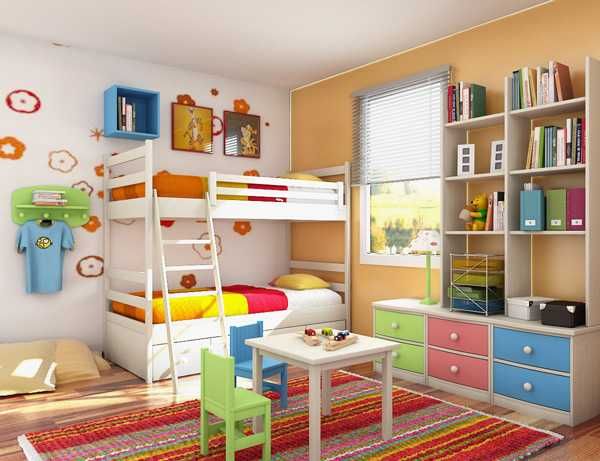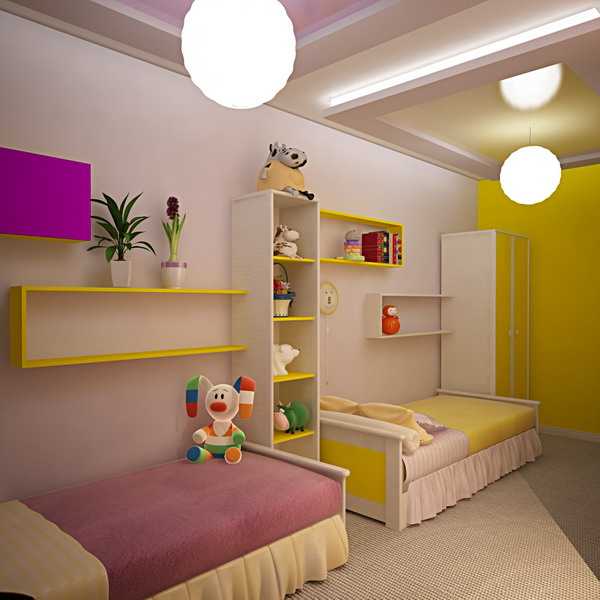Creating a unique, personal space for your child in a shared room really isn’t as hard as you think. Room sharing can be so rewarding for little ones (and big ones too!)
You might have read my piece from January on how the boys are finding their shared room. They love it, and after speaking to friends with children who are close in age, I think most of the time young children will get on perfectly well sharing a room – provided they have space. Sometimes it can be difficult if two children share a bedroom to establish their sense of ownership and individualism, especially in smaller rooms. So without further ado, here are some tips for creating a harmonious shared space for your children and hopefully making room sharing a fun experience for all.
Bed Placement
If you have a medium to big sized bedroom, two single beds on opposite sides of the room (like the boys have) is a great way to maximise space in a central area, as well as giving each child a sense of their own individual ‘room’ – allow them to each choose their bedspread designs to avoid arguments in the future. I do have to say that I have found our boys often hop into each others beds, especially if they have had bad dreams or simply don’t want to go to sleep yet, but one thing I like is that they can say no to each other and have their own space. For smaller rooms, bunk beds are a really popular solution, and have been used by savvy parents for years as a means of fitting multiple children into one shared living space. Allow your children to decide together which bed is theirs, again allowing them each their own area of the room, but with an option of being close together if they want.
Bunk beds have been used for years by savvy space savers – it allows your children to have a personal space in a very small room that they share.
Shared and Separate Storage
If your kids are similar ages and sizes, it might be a practical idea for them to have a shared wardrobe. If this is not the case, give them each half of the drawer and hanger space in their closets, or compromise on shared hanging space with individual dressers. Once they reach school age, consider purchasing a desk with drawers on either side in which each child can keep their schoolwork and avoid any possible hand-in mishaps. At the moment Reuben has the wardrobe in our set up and Toby has the chest of drawers. It’s working well for now, but I can imagine as they get older they will need something more so we have invested in some tall boys to go either side of their chest of drawers – one for each boy to keep trousers and tops.
Floating Shelves
Floating shelves are perfect for additional storage, decoration and even as a place to keep an older child’s treasures out of reach for little ones.
The saviour of small rooms, floating shelves are a lifesaver when running low on floor space. Fix some to the walls beside the beds and above headboards to serve as bedside tables and storage for spare bedding. As your kids grow older (and taller), continue to add more shelves to accommodate for the extra books, linens, and toys they’ll accumulate. You can get some fabulous decorative shelves too that will allow you to store a few books, precious toys and favourite things – this is perfect if you have a slightly older child with a younger one – the younger child won’t be able to grab anything they shouldn’t, but the eldest will still have access. Win win!
Individual Decor
Finally, in order to maintain a sense of harmony (and keep the room clutter-free), consider incorporating storage bags and hooks into each child’s sense of style. Fixing one storage hook per child to the back of the bedroom door gives them space to hang their dressing gowns and coats, while labelled storage bins by the beds can hold onto their most-used books and toys. For an easy and damage-free way to add personality to their space, consider using easy peel-and-stick wall panels. It allows each child to customise their section of the room with fun patterns or colours, and it can be easily changed as their tastes evolve. To ensure harmonious living, consider letting them decorate their individual bedside walls as they please with whatever photos or pictures they choose, but get all involved on selecting a paint colour or the wallpaper for the wall, or choosing family photographs to hang up in the communal space.
To ensure harmonious living, consider letting them decorate their individual bedside walls as they please with whatever photos or pictures they choose, but get all involved on selecting a paint colour for the wall, or choosing family photographs to hang up in the communal space. You might remember me mentioning in previous posts that I allowed Reuben to choose the artwork that went on his wall, and that Toby picked what stacking dolls I was planning to buy for his floating shelves? It just made the room feel a bit more personalised for the boys and they loved it.
Harriet x






